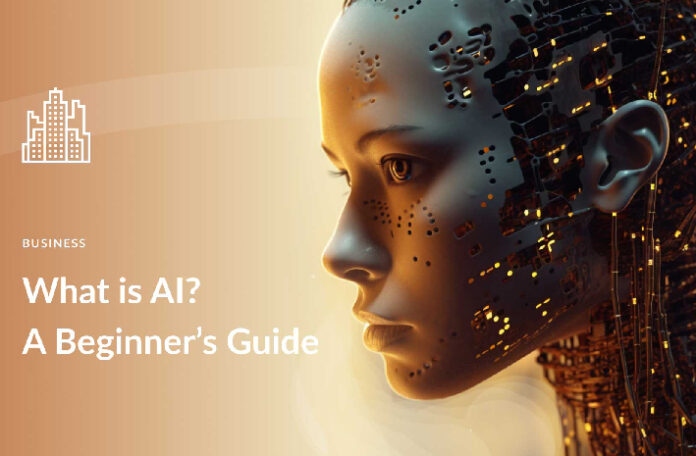Artificial Intelligence (AI) has become one of the most buzzworthy topics in recent years, transforming industries and our daily lives. But what exactly is AI, and how does it work? In this article, we’ll break down the fundamentals of AI, its types, how it works, and how it’s shaping the future.
Introduction to AI
Artificial Intelligence (AI) might sound like something out of a science fiction movie, but it’s very real—and it’s impacting everything from the way we shop online to how doctors diagnose diseases. At its core, AI is about creating machines or software that can mimic human intelligence.
The Definition of Artificial Intelligence
So, what exactly is AI? Artificial Intelligence is the simulation of human intelligence processes by machines, especially computer systems. These processes include learning, reasoning, problem-solving, and decision-making. In simpler terms, AI is when machines are made to “think” like humans.
AI in Simple Terms
Imagine a robot that can play chess, recognize faces in photos, or drive a car. This is AI in action. It’s the ability of machines to take in information, make sense of it, and use that information to perform tasks—tasks that would normally require human intelligence.
How Does Artificial Intelligence (AI) Work?
AI systems are powered by algorithms—sets of instructions that guide machines in their tasks. But AI goes beyond just simple programming. It involves learning from data and adapting to new information over time, much like how humans improve their skills through practice.
The Basic Building Blocks of AI
At the heart of AI are three main components: data, algorithms, and computing power. Machines learn from large amounts of data using algorithms, which are mathematical models that help them make decisions. The more data the system processes, the smarter it becomes.
AI Algorithms and Machine Learning
Machine learning (ML) is a subset of AI where systems learn and improve from experience without being explicitly programmed. For instance, if a machine learns to recognize patterns in email spam, it can automatically flag future spam emails based on past data.
Deep Learning and Neural Networks
Deep learning is a more advanced subset of machine learning. It uses neural networks—models inspired by the human brain—to process information in layers. Deep learning is behind many of the AI systems we see today, such as voice recognition and autonomous driving.
Types of Artificial Intelligence (AI)
Not all AI is created equal. In fact, AI comes in several different forms, each with its own capabilities and limitations. Let’s explore the main types of AI:
Narrow AI (Weak AI)
Narrow AI, or Weak AI, refers to AI systems designed for a specific task. It’s the most common form of AI today. Examples include facial recognition software, virtual assistants like Siri or Alexa, and even recommendation algorithms on platforms like Netflix or Amazon.
General AI (Strong AI)
General AI, or Strong AI, is a type of AI that can perform any intellectual task a human can. This type of AI doesn’t exist yet, but it’s the goal for many AI researchers. It would be able to learn, reason, and solve problems across a wide range of tasks, just like a human.
Superintelligent AI
Superintelligent AI refers to a form of AI that surpasses human intelligence in all aspects—creativity, problem-solving, decision-making. This level of AI is purely theoretical at this point, and while some experts debate its potential, others warn of the ethical dangers it could pose.
How Artificial Intelligence is Used Today
AI isn’t just a futuristic concept—it’s already in use across numerous industries. Let’s look at some of the ways AI is improving our lives today:
AI in Healthcare
AI is revolutionizing healthcare by improving diagnostics, streamlining processes, and even aiding in drug discovery. AI-powered algorithms can analyze medical images, predict patient outcomes, and help doctors make more informed decisions.
AI in Finance and Banking
In finance, AI is being used for everything from fraud detection to personalized banking. AI systems can analyze spending patterns and offer tailored financial advice. They also help detect suspicious activity, minimizing financial crime.
AI in Transportation
(Autonomous Vehicles) Self-driving cars are one of the most well-known applications of AI. Autonomous vehicles use AI to process data from their surroundings and navigate safely without human input. This technology has the potential to drastically reduce accidents and transform transportation.
AI in Retail and Customer Service
AI powers chatbots and virtual assistants that help with customer inquiries 24/7. In retail, AI can predict trends, manage inventory, and offer personalized shopping recommendations, creating a more seamless experience for consumers.
The Future of Artificial Intelligence
As AI continues to evolve, it will shape the future in profound ways. But with this evolution come new challenges and considerations. Let’s explore what lies ahead:
AI and the Job Market
While Artificial Intelligence AI offers exciting potential, there are concerns about its impact on jobs. Will machines take over human jobs? While AI may automate some tasks, it could also create new jobs, especially in tech and AI development. The key will be adapting to these changes.
Ethical Considerations in AI Development
As AI becomes more powerful, we face ethical dilemmas. How can we ensure AI systems are fair and unbiased? What safeguards can we put in place to prevent misuse? These are questions that researchers and developers are working hard to answer.
Conclusion
Artificial Intelligence is a rapidly advancing technology that is transforming every aspect of society. From healthcare to entertainment, AI is becoming an integral part of our world. While there are concerns about its potential, the benefits and opportunities are undeniable. The question remains: how will AI continue to shape our future?
